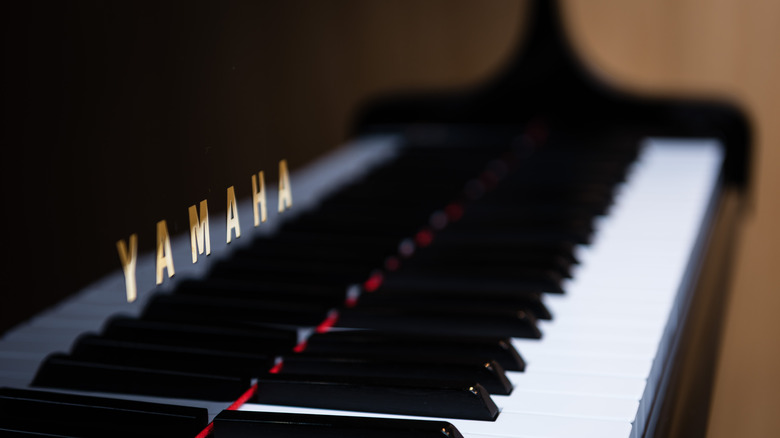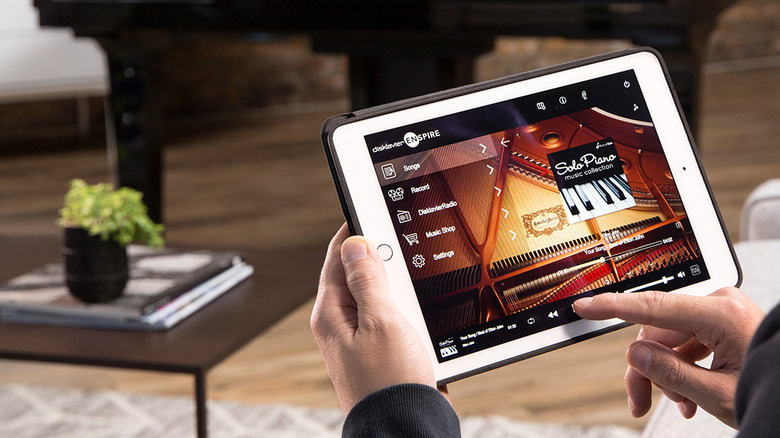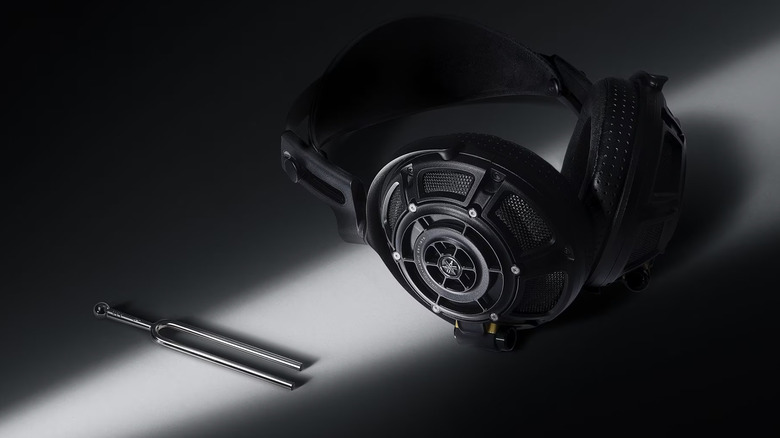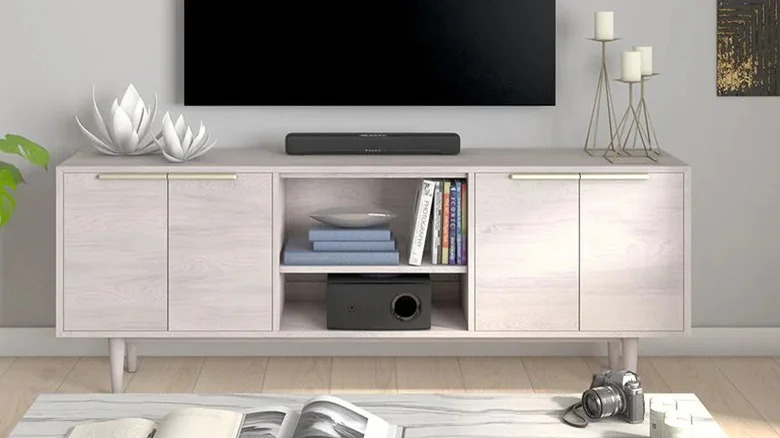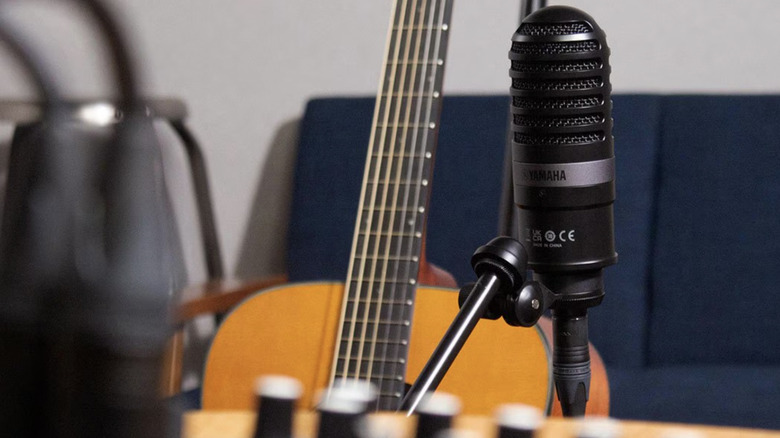4 Yamaha Tech Devices You Might Not Realize Exist
Yamaha's history, which started in 1887, is rooted in repairing and manufacturing Western-style instruments. Named after its founder, Torakusu Yamaha, the Yamaha Corporation has undergone a series of evolutions over a century of its history. From musical instruments to audio products and sports equipment, Yamaha has dabbled in both the production of these products and setting up institutions that help enable people to use them, like the Yamaha Music School.
It took almost 70 years of existence before it launched the Yamaha Motor Company, which coincided with the release of its pioneering YA-1 motorcycle in July 1955. Unsurprisingly, Yamaha ranks pretty highly in our list of best motorcycle brands here at SlashGear, but, did you know that Yamaha continues to produce some interesting pieces of tech off the road as well?
Through the years, Yamaha has dipped its feet into multiple industries, even deliberately cheekily. In 2015, Yamaha's bike designers created some unusual musical instruments during a fun creative challenge. If you're curious about how other industries benefit from Yamaha's diverse interests, keep reading.
Piano systems
In 1900, Torakusu Yamaha built the first Japanese piano, and the company hasn't stopped since. Yamaha became a staple for pianists worldwide, who enjoyed its products, from the comforts of their homes to the grand concert halls where they play professionally. Among its innovations that still influence the music industry today is a line of high-tech pianos.
One unique technology-powered piano is Yamaha's TransAcoustic Piano, offering a built-in transducer system that can let pianists create digital effects, like electric pianos, strings, and even a choir. In addition, the TransAcoustic Piano lets pianists record music via USB or Bluetooth-enabled devices easily. However, this isn't even its top-of-the-line model.
Yahama refers to the Yamaha Disklavier as "the world's most advanced piano." The Disklavier comes in four versions: Enspire Pro, Enspire ST, Enspire CL, and DKC-900. In addition to a high-quality recording and playback system that can work in a variety of formats, the Disklavier series also offers streaming services, auto-calibration, motorized muting systems, integrated speakers, app integration, and more.
In recent years, Yamaha has continued to push the boundaries of what it can do with musical instruments. In 2018, working with Tokyo arts universities Yamaha used AI to turn a dancer's movements into piano sounds. Titled "Mai Hi Ten Yu," the performance was conducted in tandem with dancer Kaiji Moriyama and the Berlin Philharmonic Orchestra Scharoun Ensemble.
Headphones
In 1976, Yamaha launched the HP-1 headphones, which not only employed the acclaimed designer Mario Bellini but also introduced Yamaha's proprietary orthodynamic drivers, which would feature in further headphones over the years. While at the time, the HP-1 headphones weren't cheap — priced at around $200 — Yamaha was applauded for their sound quality.
While no longer as ubiquitous, the Yamaha HP-1 headphones are still in demand from collectors. If you're hoping to get your hands on a pair of nostalgic Yamaha headphones of the past, there are a few things you need to consider when purchasing vintage headphones.
Yamaha continues to develop and sell headphones from wireless earbuds, and neckband-style earphones, to over-ear models, like the YH-L700A. The original HP-1 model still influences products today, with Yamaha citing how the vintage headphones and its signature orthodynamic drivers shaped the core aspects of the flagship YH-5000SE headphones. Manufacturing of these products takes place exclusively in Yamaha's Kakegawa factory, the same location where it makes its grand pianos.
Speakers & Soundbars
Although it didn't rank that high in our list of major soundbar brands, Yamaha's leadership in the segment shouldn't be understated, especially for budget buyers. In 2024, Yamaha's YHT-4950U receiver competes pretty well for people in the market to build affordable surround sound systems. At just $420, you can snag six speakers plus the receiver and experience 5.1 surround sound audio from the comforts of your home. In addition, it offers CINEMA DSP technology, which can give your private theater the same feeling as more immersive venues, like theaters or cathedrals.
On the other hand, Yamaha also offers soundbars for business settings, like the ESB-1090. Designed for professional settings, the ESB-1090 isn't just built to blend into modern-looking, mid-sized rooms, it also has preset features for hotels, conference rooms, and educational spaces. For people who have home recording studios, like musicians or voice artists, Yamaha's HS8 is one of our top picks for studio monitors that can nail detailed sound reproduction in the low-to-mid price range.
Microphones
Yamaha also dabbles in different kinds of microphones for use in professional broadcasting or capturing audio in the field. Its studio-quality condenser microphones, like the YCM01, can record voices and instruments while reducing unwanted noises at the same time.
Alternatively, streamers and casual users can choose its plug-and-play AG01 USB microphone, which you can take home for $363. Compatible with both computers and iOS/Android phones, it offers some flexibility in the age of content creation, with the added ability to process audio on your mobile phone. Yamaha's USB microphone also looks good on screen, which is ideal for people on podcasts or vlogs that have it featured prominently.
Lastly, Yamaha's Pocketrak recorder line is a useful tool for many creatives, from musicians looking to get high-quality recordings of gigs to journalists looking to nail an interview or get quotes during a press conference. With its PR7 model, you can use functions like tuner and metronome, overdubbing, or marker editing to capture sound easily, which makes it a good companion for professionals in the events and media industry.
